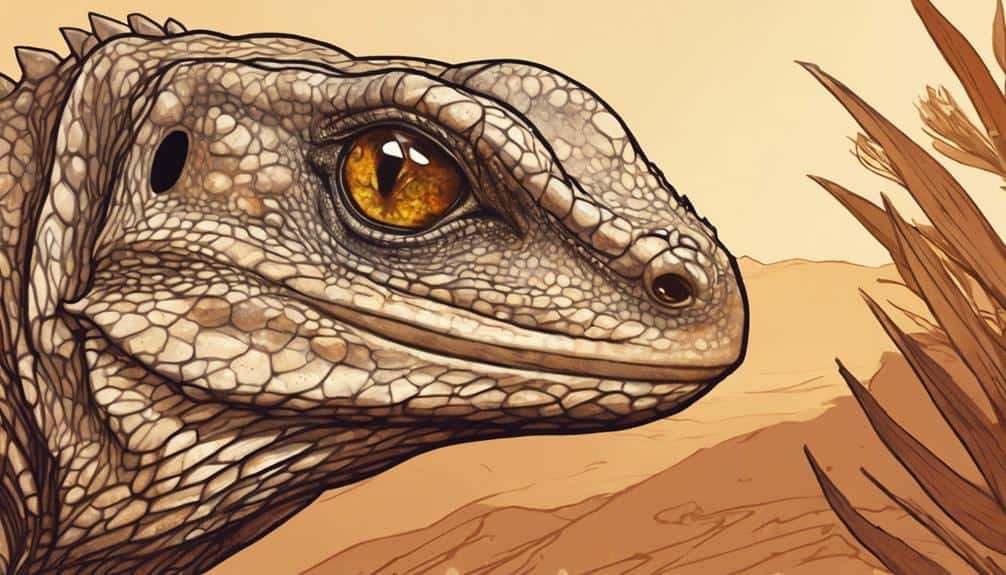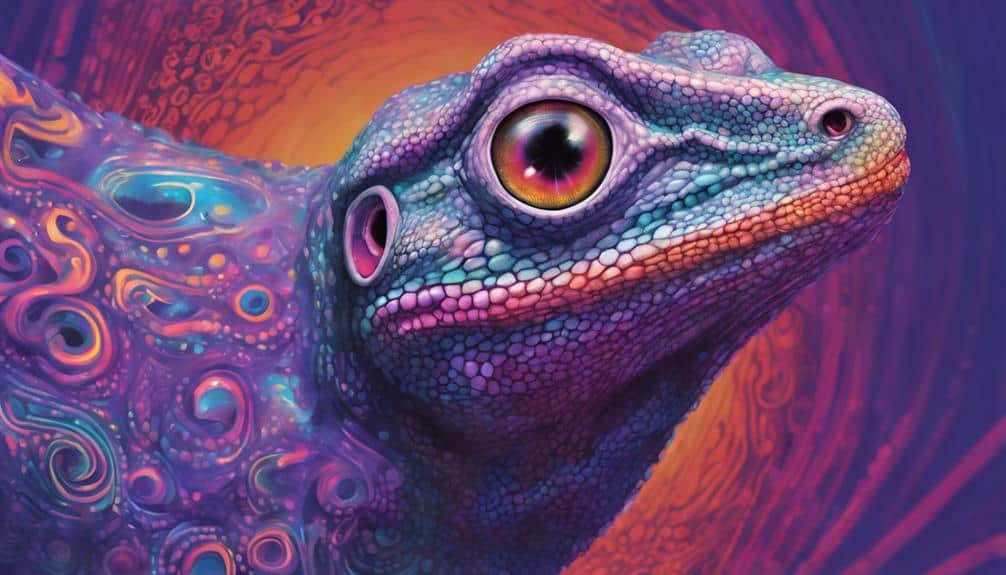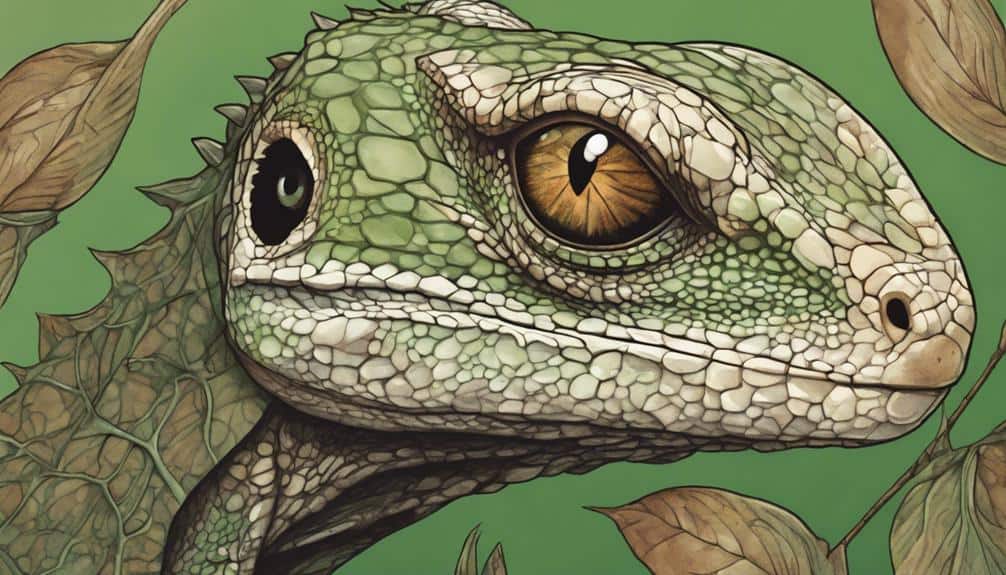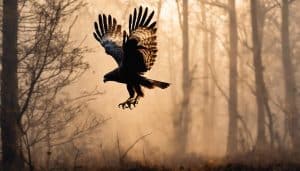You're about to discover the fascinating ways lizards perceive their environment. Their remarkable vision capabilities include seeing ultraviolet light, thanks to specialized opsins, which aid in species recognition and finding food. In addition, their multicolored oil droplets enhance visual acuity and color perception. Moreover, their unique 'third eye' on top of their heads, the parietal eye, detects light and regulates their circadian rhythms. As you explore lizards' visual capabilities, you'll uncover more intriguing adaptations that have evolved to help them thrive in their environment. There's more to their visual world, waiting to be uncovered.
Key Takeaways
• Lizards have remarkable vision capabilities, including the ability to perceive ultraviolet light, thanks to specialized opsins in their cones.
• Multicolored oil droplets in their retinas enhance visual acuity and color perception, allowing them to see and respond uniquely to their environment.
• Slit pupils regulate the amount of light entering their eyes, giving them precise control over the light that enters their eyes.
• A parietal eye, or third eye, on the top of their heads aids in detecting light, regulating circadian rhythms, and adjusting body temperature.
• Some lizards can perceive red light despite lacking red-sensitive cones, showcasing their unique color vision capabilities.
Lizard Vision Capabilities
When you take a closer look at a lizard's eyes, you'll discover a range of remarkable vision capabilities that enable them to thrive in their environment.
As a reptile, lizards' vision is tailored to their specific needs, allowing them to navigate and hunt with precision. One key feature that enables them to see is the presence of Opsin proteins in their cones, which allows lizard species to perceive light in the ultraviolet range, expanding their visual spectrum beyond what humans can see.
Additionally, lizards' retinas contain multicolored oil droplets that enhance their visual acuity and color perception, giving them a more vivid view of their surroundings. Their slit pupils, which can dilate and constrict in response to light variations, also aid in regulating the amount of light that enters their eyes, making them adaptable to different lighting conditions.
These remarkable vision capabilities enable lizards to see and respond to their environment in ways that are unique to their species, making them well-suited to their ecological niches.
The Third Eye Advantage

As you explore the lizard's visual system further, you'll discover a unique feature that sets them apart from other animals: a parietal eye, often referred to as the 'third eye,' located on the top of their heads.
This remarkable organ, also known as the parietal eye, contains a retina, lens, and cornea, allowing lizards to detect light and regulate their circadian rhythms. The third eye is specifically designed for light detection, helping lizards sense changes in light intensity. This ability aids in thermoregulation, as they can adjust their body temperature according to the environmental light conditions.
Additionally, the parietal eye plays an important role in predator avoidance, as it provides lizards with essential environmental information. Although it's not used for detailed visual perception, the third eye significantly enhances lizards' sensory capabilities, giving them an edge in their natural habitats.
Seeing Beyond Human Spectrum

Beyond the human visual spectrum, lizards possess a unique visual advantage, courtesy of specialized opsins in their retinas that enable them to perceive ultraviolet light.
This ultraviolet light perception capability allows them to see beyond what humans can, giving them an edge in their environment. For instance, the tokay gecko can detect UV light, which enhances its color perception, aiding in species recognition and finding food.
This ability is essential for survival, especially in low light conditions where their visual systems are adapted to thrive. Surprisingly, some geckos, despite lacking red-sensitive cones, can still perceive red light, showcasing their unique color vision capabilities.
Frequently Asked Questions
How Do Lizards See Things?
As you wonder how lizards see things, you're about to uncover the fascinating world of reptilian vision.
You'll find that lizards perceive their surroundings in a unique way, thanks to specialized retinas containing multicolored oil droplets that allow them to see into the UV range.
Their opsins enable a wider color spectrum, and adjustable lenses help them focus.
It's a remarkable visual system, and you're about to dive deeper into the intricacies of lizard vision.
What Are Three Facts About Lizards?
You're curious about lizards! Did you know that 70% of a lizard's brain is dedicated to processing visual information? That's impressive!
Now, let's explore three fascinating facts about lizards.
To begin with, they've a fourth cone for UVA perception, enhancing their color vision beyond human capabilities.
Next, they can adjust their focus by manipulating their lenses.
Lastly, a specialized parietal eye helps them detect light, regulating their behavior and rhythms.
What Are Interesting Facts About Lizards Eyes?
As you explore the fascinating world of lizard vision, you'll discover some remarkable facts about their eyes.
You'll find that lizards can see into the ultraviolet range, giving them a more vibrant view of their surroundings.
Additionally, some geckos can perceive red light despite lacking red-sensitive cones, showcasing the diversity in lizard color vision.
How Far Can a Lizard See?
As you gaze into the eyes of a lizard, imagine a high-powered telescope, scanning the horizon for signs of life.
You're wondering, how far can a lizard see? The answer is astonishing – up to 250 feet!
That's like spotting a snack from the length of two football fields.
With vision adapted for hunting and survival, lizards can detect even the slightest movements from a great distance, giving them a significant advantage in their environment.



